Humans love colors and colors profoundly impact our physiological well-being and world perceptions. Interestingly, color is a core aspect of feng shui principles and Taoist cosmological philosophy. Many feng shui practitioners use it to balance and adjust a space’s energy. But you don’t have to consult a feng shui practitioner to understand color balance. You […]
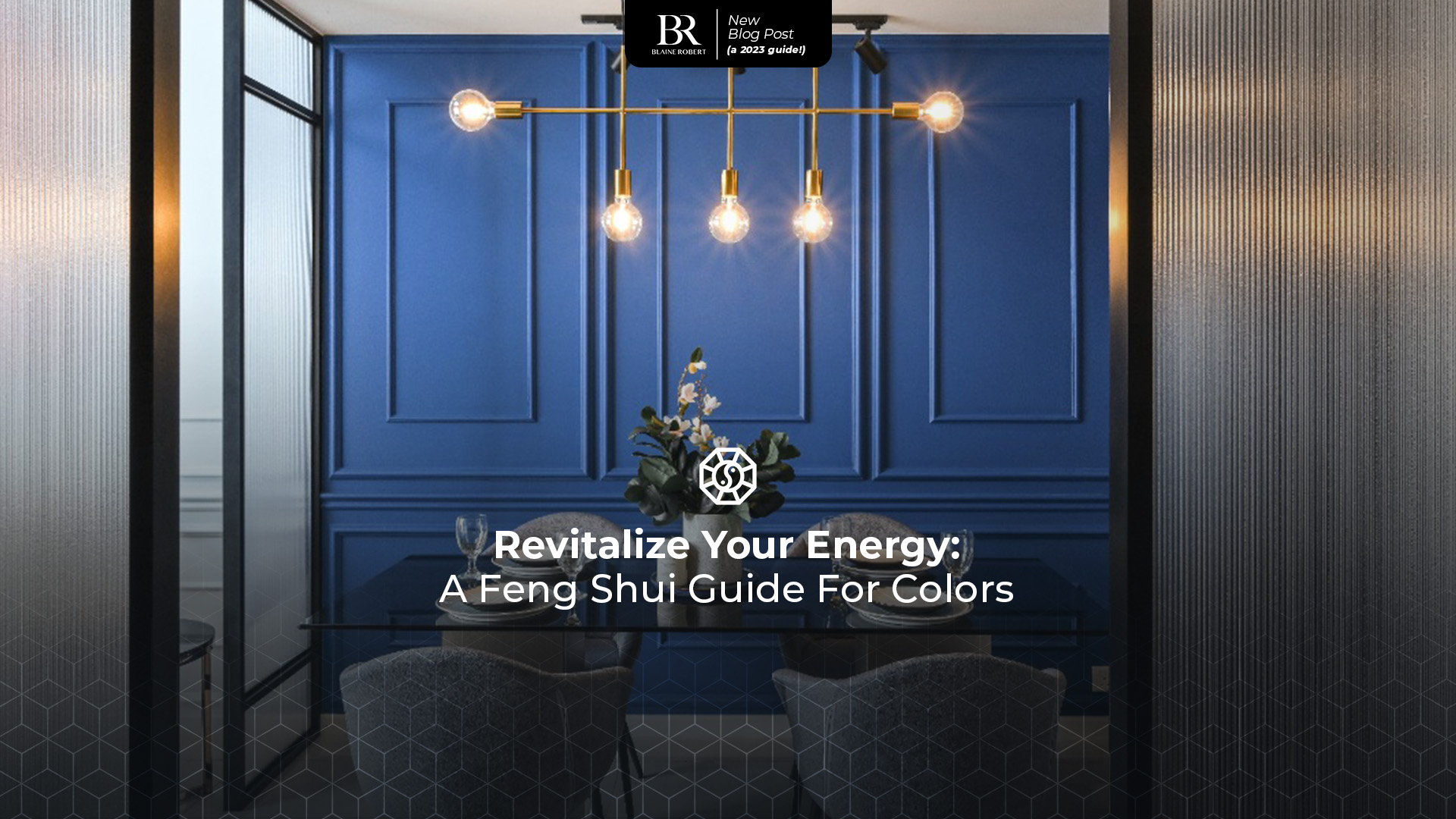
Humans love colors and colors profoundly impact our physiological well-being and world perceptions. Interestingly, color is a core aspect of feng shui principles and Taoist cosmological philosophy. Many feng shui practitioners use it to balance and adjust a space’s energy. But you don’t have to consult a feng shui practitioner to understand color balance. You can read a feng shui guide for colors and learn to do it yourself.
According to the feng shui theory, you can strategically change color to transform and rejuvenate a room. It’s one of the easiest ways to alter the vibe and feel of a space. So, why not try these feng shui color principles when choosing colors for your home? Read on for a feng shui guide to choose the right colors and balance elements in your interior design!

Think about these interior design scenarios. Visualize a room filled with too many fiery colors – red, orange, and yellow. Doesn’t it make you feel burned out and frantic? It’s best to tone it down with brown, green, and blue.
Next, think of a room with too much black and blue. It’s overwhelming and makes you feel cold and distant. To balance the muted colors, add decorations with warmer and brighter hues.
Use a feng shui guide for colors to understand the significance of different colors. Then you can use them wisely in your interior design. Humans associate colors with specific feelings. In feng shui, colors contain energy that elicits different responses from people.
Adding new paint colors or decorations can dramatically change a room’s energy. You might also need to tone down the predominant colors in a room to balance it well.
Each room in your house serves a different purpose, so consider these tips when picking colors for your home. Decorate the rooms in your home with recommended colors from a feng shui guide to choose the right colors. These tips are generalized for convenience, but you can vary them depending on your preferred energy balance.

Blue connects with the water element and meditative energy. It soothes, calms you down, and encourages contemplation and focus. It’s also great for health; blue slows your heart and breathing rate, lowering your blood pressure.
A feng shui guide for colors will help you to understand the different meanings of shades of blue. Mid-tone blue and teal represent compassion and growth. Deep blue is closely associated with black and suggests depth.
One of the most suitable feng shui living room colors is blue. It symbolizes growth and fresh beginnings, so it would be great for living rooms. Or, use blue for your bedroom color to replicate a tranquil, laid-back seaside feeling. The calming effect of a light-colored blue wall can be very soothing and suitable for good sleep.

Black is the yin element and encompasses the sum of all colors. Contrary to common negative connotations about black, this color conveys positive energy in feng shui philosophy.
Black represents the water element and symbolizes stillness, calmness, wisdom, and deep contemplation. This dark color gives off an alluring aura of mystery, suggesting hidden depths. It’s also an elegant and timeless shade for minimalistic design.
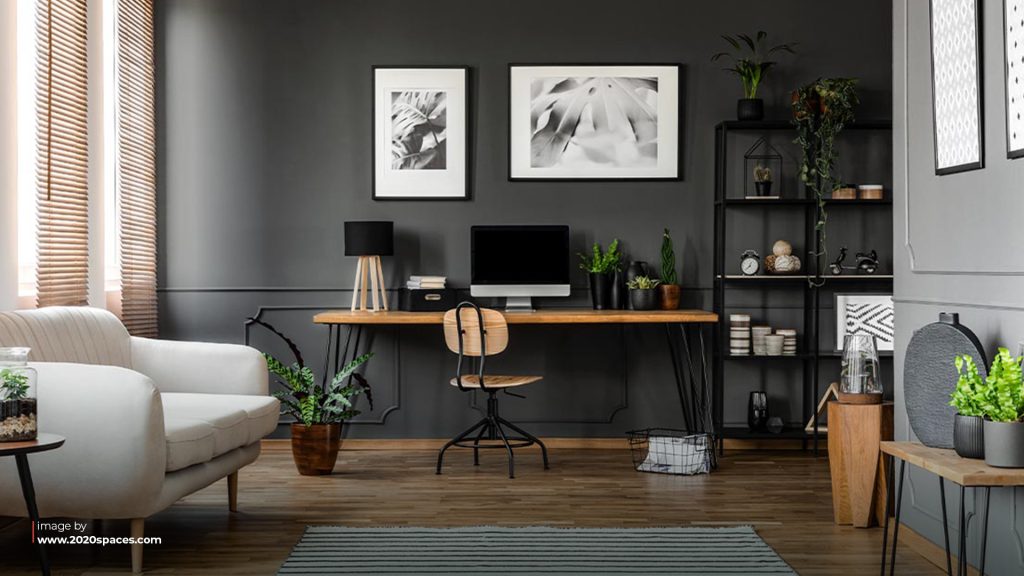
White is the yang element and represents a clean slate. It’s also connected with metal and symbolizes mental clarity and precision.
White is an excellent and safe color for an inviting feng shui front door. It’s also great for your entrance foyer. It is gentle and such a color attracts positive energy into your house.

Green represents forest, springtime, and wilderness. It’s soothing for the eyes and reminds us of our innate connection to nature. Green encourages growth, action, and internal change. For a regenerative energy flow, we recommend layering several shades of green.
A gentle shade of green is perfect for feng shui bedrooms because it calms the senses and prepares you for rest. Green connects to the family area on the feng shui bagua map. So, it’s perfect for living rooms and bedrooms. It is one of the favorable feng shui dining room colors too!

Red is the color of vitality, power, and love. Red is an unusual interior design color choice, and many use it for embellishments or trimmings. Some examples are red flowers, vases, tablecloths, and curtain tassels. You can also use deep mahogany red as your feng shui front door color.
Red is the most auspicious feng shui color; many use it to protect homes and drive out bad luck. It symbolizes fire elements and is the source of life energy. We recommend using red sparingly to revitalize a space and alleviate moodiness.
Light red and pink are good feng shui bedroom colors for couples. Red repels bad luck and attracts good fortune. Pink is also connected with marriage on the feng shui bagua map. Unlike overpowering bright red paint, pink and light red are mellow enough to ensure a restful sleep.
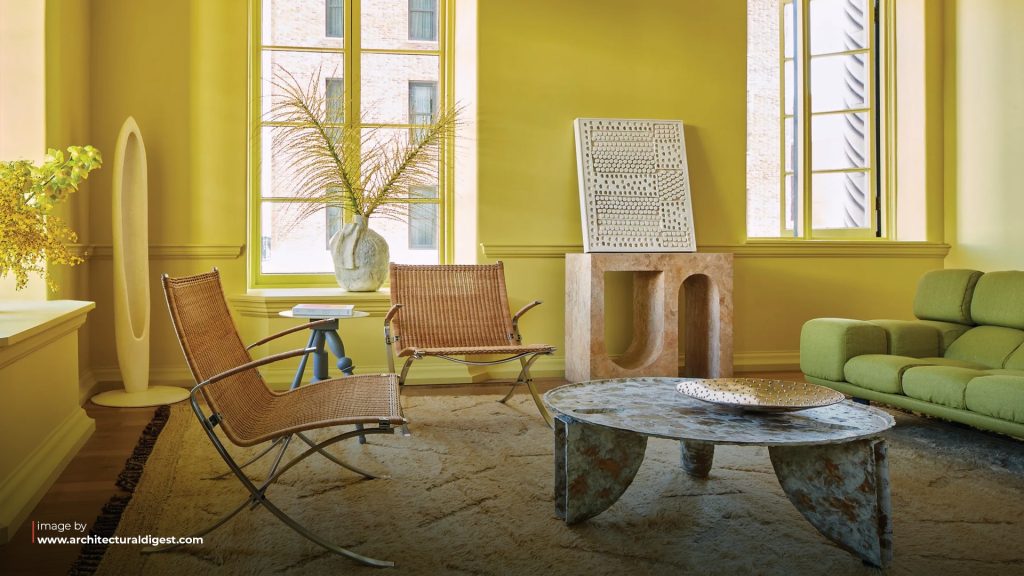
Yellow’s connotations are optimistic and bright, much like the name itself. Bright yellow resembled gold on ancient Chinese emperor robes; yellow ochre displayed humility on a monk’s robes. Touches of gold on furniture and architecture are symbols of elegance and regality.
In feng shui, yellow represents the earth element and symbolizes royalty, humility, and contentment. This color reminds you of natural golden sunlight and brightens up any room.
While greens and blues are calmer shades, red-orange brings vigor to any space. So take note of the colors whose significance has appealed to you.
Taoist philosophy states that the world contains five elements. The elements are wood, Earth, metal, fire, and water. You should balance these five elements in your room for a comfortable living space.
Choose the right colors according to the element’s symbolism for a moderate mix of all five elements. Furniture choices, ornamental arrangements, and shapes are also essential for balanced feng shui. So, consult a feng shui guide for colors to help you understand each element’s meaning and suitable application.

Wood symbolizes creativity, growth, and vitality. It’s a classic natural material that reminds you of greenery and healing. But you should moderate the amount of wood used for interior decoration. Too much wood makes you feel rigid and inflexible; too little wood symbolizes boredom and ambivalence.
When you use wood elements, design them in shapes that resemble natural formations like tree trunks and branches. Feng shui practitioners often recommend tall, upright forms. Make a beautiful feng shui dining room that resembles a garden with elegant wood arrangements.
You can also introduce wood elements in other areas with earth tones, greens, and blues for a natural color combination. Add natural decorations to bring out the wood’s beauty. Display fresh flowers, small plants like bonsai, cotton or silk fabrics, and other wooden furniture.
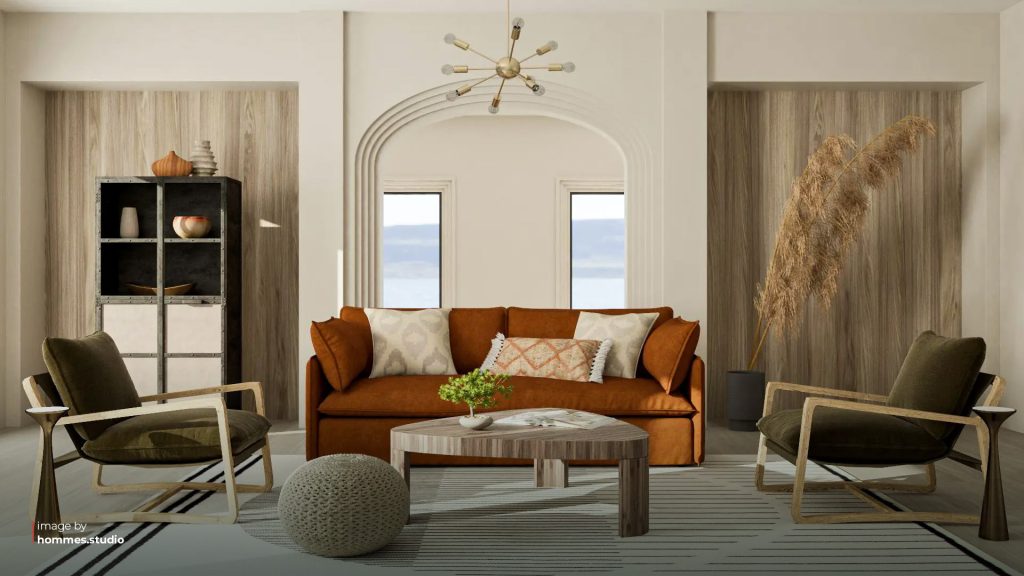
The Earth feeds, sustains, and nourishes life. In feng shui, Earth elements bring balance, stability, and nourishment. It is usually associated with earth tones like brown, yellow, and orange. Shades of green and sand-colored hues also embody this element. Too much earth imposes a heavy feeling of boredom; too little earth causes distraction and messiness.
Introduce earth elements by hanging natural landscape paintings with lots of greenery or placing plants around your home.
Earth tones have a grounding and inviting effect on visitors, so they’re suitable for feng shui living room colors. Paint your walls with neutral tones like brown, green, and blue to calm your guests.
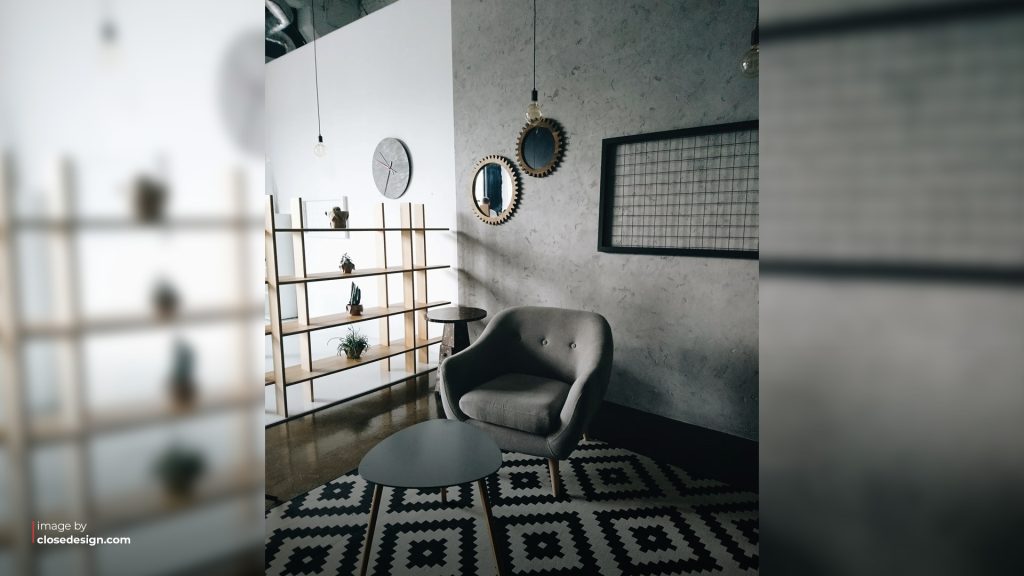
Metal is historically symbolic of human innovation and power. Humans created tools from metal during the Iron and Bronze Ages. Modern-day icons of metal skyscrapers and man-made architecture are impressive feats of human ingenuity.
In feng shui, metal positively enhances logical reasoning and mental acuity. Add metal elements to your interior decoration to boost focus, organization, and analytical thinking.
Remember to moderate the amount of metal furnishings you use. Too much metal can make you appear overly critical and talkative; too little suggests extreme cautiousness and fear of challenges.
Balance the sharpness of metal in your home office with soft or elegant shapes. Use round or oval variants made from different kinds of metal. Mix bronze, brass, gold, and gray metals for a kaleidoscope of color. You can embellish them with small rocks and stones. Or, choose white, grey, silver, and pastel-colored furnishings.
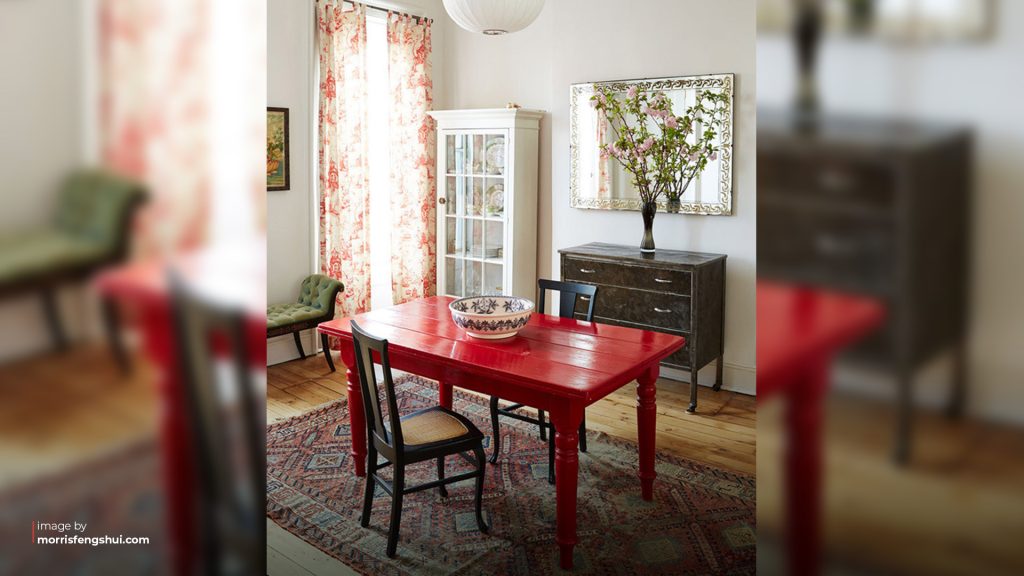
The discovery of fire was a crucial milestone in human history; since then, fire has revolutionized modern life. The fire element suggests aggression, passion, and vitality. It’s great in small amounts to encourage boldness and leadership.
Use warm colors to introduce the fire element. Add it to your home with candles, animal print fabrics, and natural light.
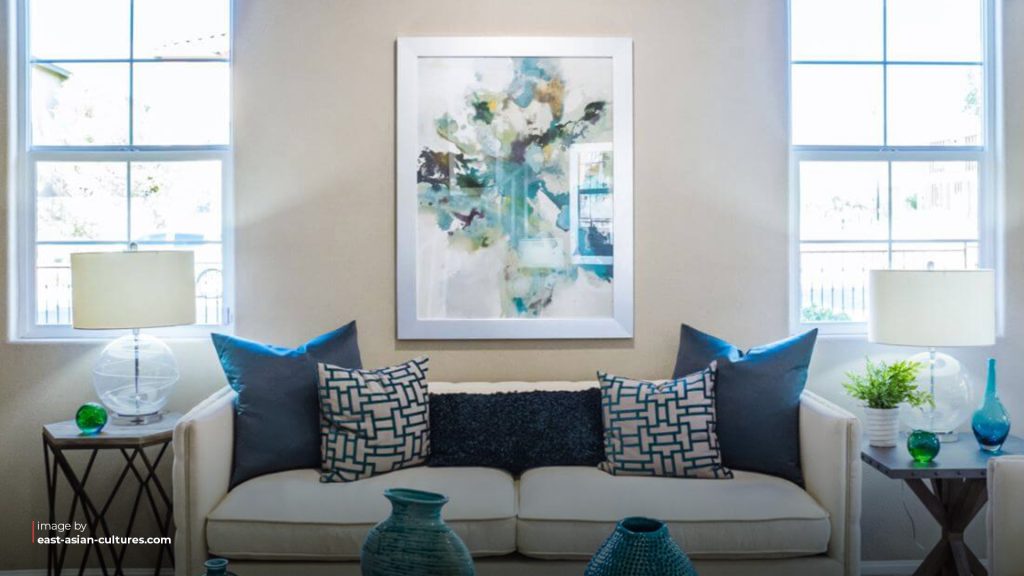
Water is the life-giving force of the world; nature would not exist without it. It’s no surprise that the water element deeply connects to overall human well-being. When you think of water, you think of calmness, tranquility, and relaxation. In feng shui, water is the domain of enhancing spirituality and regulating emotions.
Add water elements with dark and gently sloping or curved features. Some examples are black barstools, pebble ornaments, and sculpted vases. If you have the space and budget, add a round fish bowl, terrarium, or zen tabletop fountain.
A feng shui guide for colors is potent enough to guide you in picking the right colors. We hope you’ve also learned about feng shui interior design principles too. Go forth, apply this knowledge, and use various shades and shapes to enhance desired qualities of the elements. Color is the essence of nature; feng shui colors help you harness positive energy in your home and life.
42-1, Jalan Doraisamy 50300 Kuala Lumpur, Malaysia.
Office No.1104, Aspect Tower, Business Bay, Dubai, United Arab Emirates
19, Jalan Mutiara Emas 2A, Taman Mount Austin, 81100 JB.